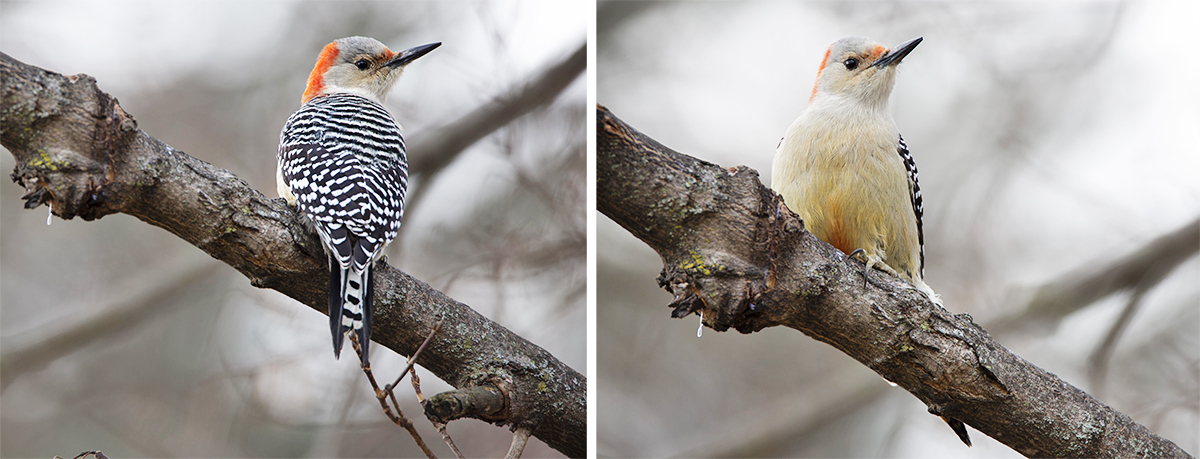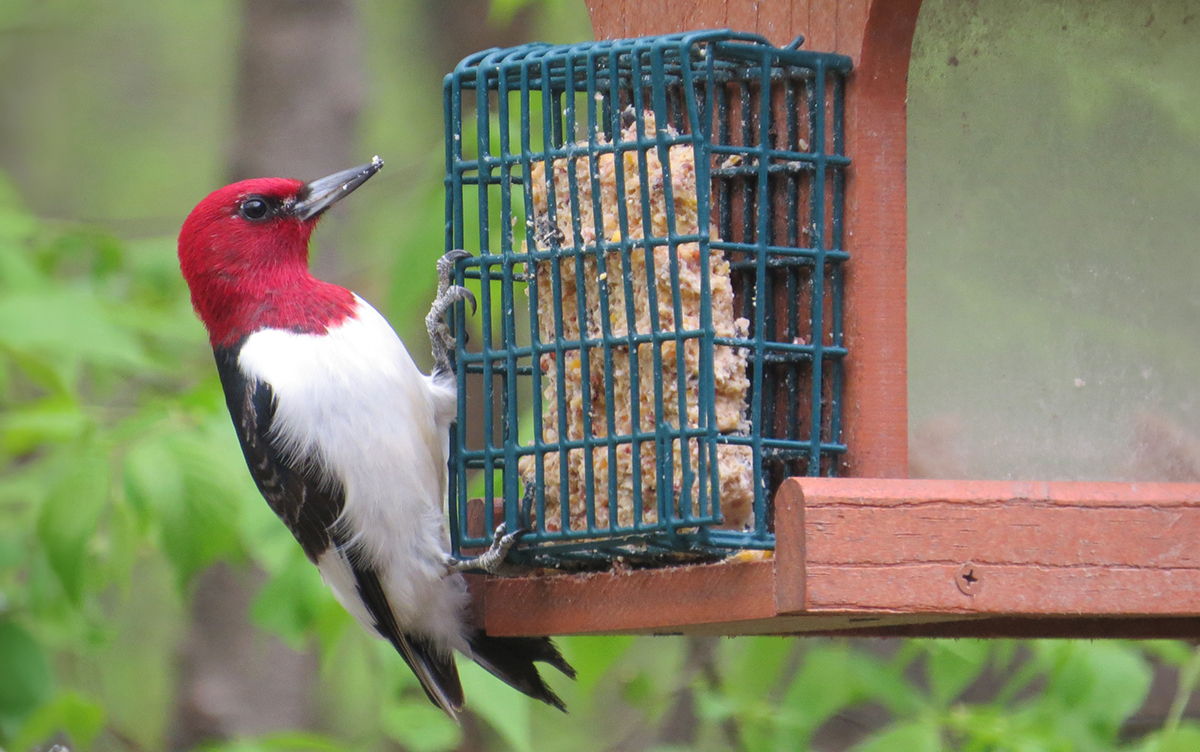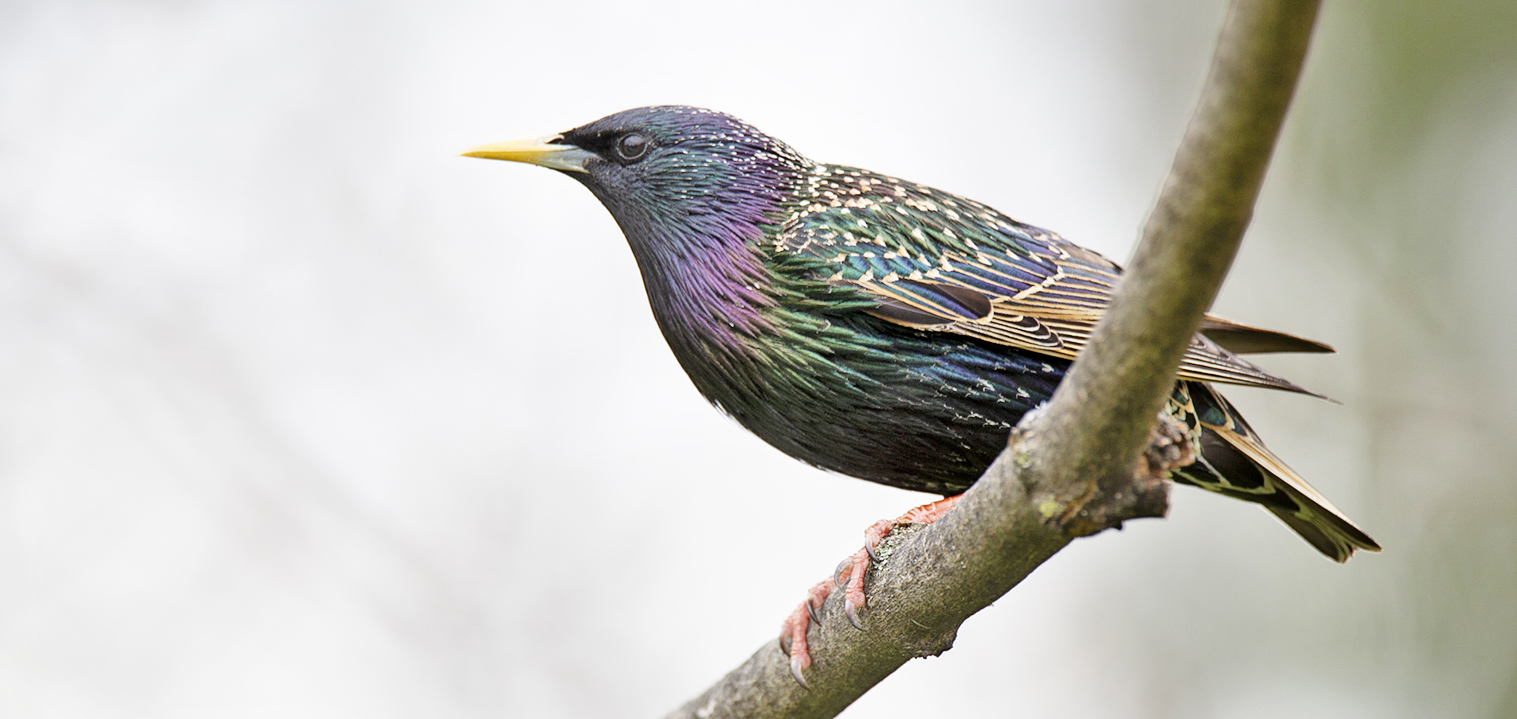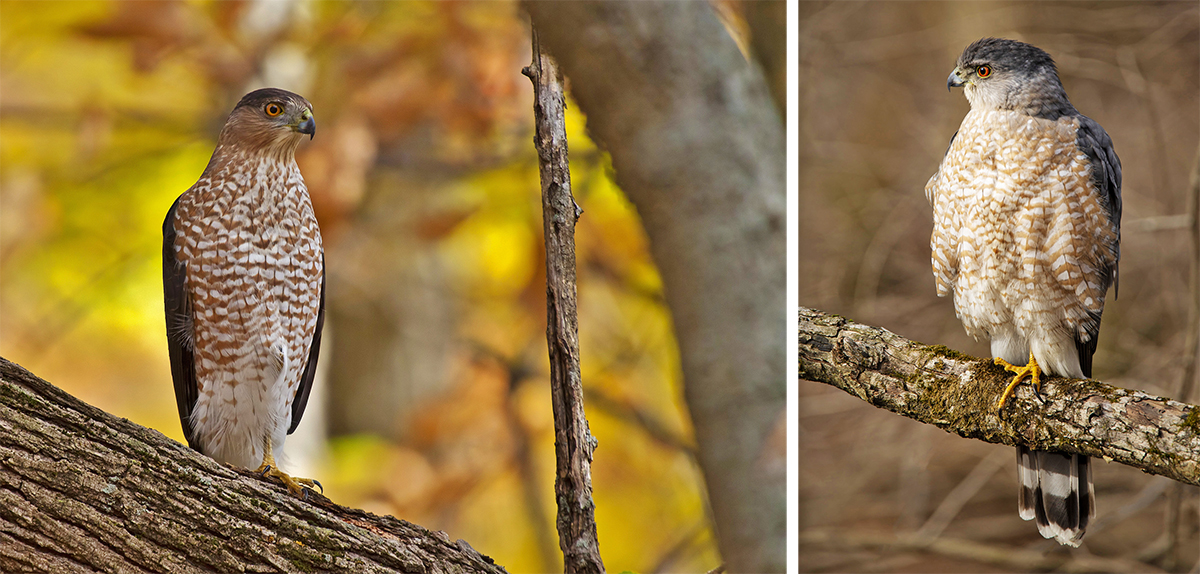LEAH CONWAY
Seasonal Naturalist, Blacklick Woods

Of the 22 woodpecker species found worldwide, seven are present in Ohio. Today we’ll be taking a look at the aptly-named red-headed woodpecker. Though sometimes confused in name with the more commonly seen red-bellied woodpecker, the red-headed woodpecker has a deep, crimson-colored head which makes it unmistakable. In contrast, the red-bellied woodpecker has a bright patch of red on its crown and another pale red patch on its belly, for which it gets its name.

Red-headed woodpeckers also stand out from their peers as one of only four North American woodpeckers that stores foods! It will cache acorns, beech nuts and other food items such as grasshoppers in tree cavities, and sometimes even under roof shingles. Other recorded animal-based food items include ants, beetles, crickets, adult and larval butterflies and moths, and spiders.
The red-heads have also been found to consume other bird species’ eggs, and even mice or smaller birds like bluebirds, nuthatches and chickadees — particularly fledglings. Plant matter consumed by them may be wild-growing fruits such as raspberries, blackberries, elderberries, chokecherries, black cherries and dogwood berries, or fruits grown in orchards such as apples, pears or cherries, and cultivated grains like corn.

Additionally, red-headed woodpeckers stand out in having been found to suffer more greatly from road mortality than other woodpecker and bird species. Their tendency to utilize telephone poles for perching, storing food and nesting should be acknowledged as a potential reason. Often found on the sides of country roads or busy streets, these telephone poles seem like good perching ground from which to flycatch, but it puts the red-heads in the path of moving vehicles. Also, their favorable disposition towards cornfields that are transected by roads and cars, may explain this unfortunate statistic.
However, road mortality alone cannot account for the 54 percent decline in population reported by the North American Breeding Bird Survey in 2019. Since the plumage of red-headed woodpeckers is visually striking, it must also be noted that this species was one of an unfortunate many that suffered from the fashion trade in the 19th and 20th centuries, though how devastating an effect this had is hard to estimate. Also in the 20th century, this species was considered such a pest to fruit farmers that as many as 100 could be killed on a single tree in one day. Their pest status doesn’t end with farming, though; they caused such significant damage to electric poles in Kansas that a person was hired solely for the purpose of exterminating them.

Daunting as it is, there is one last potential cause of decline to consider. The red-headed woodpecker, like all woodpeckers, is a primary cavity nester, meaning it excavates its own cavities in which to nest. Secondary cavity nesting birds, like wood ducks and owls, opt to nest in cavities they find, often abandoned by the previous resident. This is one suspected cause for the decline in red-headed woodpecker populations, as fewer cavities are available in which to nest. This is the case for two main reasons: snags, which are dead or mostly dead trees that woodpeckers use to make cavities in, are decreasing in number. Often, snags are not left standing during logging operations because they are unpredictable and pose potential danger to loggers. And fewer cavities are available for another reason, because invasive species like the European starling are competing for them with the red-headed woodpeckers. A 2017 piece in the scientific journal The Condor concluded that another influential factor may be predation from increasing numbers of accipiters such as Cooper’s hawks and sharp-shinned hawks.

So, what can we do? Increased predation by hawks and nest-site competition are difficult for us to control, but, if we happen to own land, leaving dead or dying trees standing wherever possible, and clearing invasive species such as autumn olive and multiflora rose from forest understories (which makes ground-hunting easier), are two actions we can take that are sure to benefit a number of wildlife species, including the red-headed woodpecker.

What about managing some forest areas to promote oaks?
Leah,
Love the article! Are there specific Metroparks that have had more sightings of the Red Headed Woodpeckers? We’ve only captured images at Innis Woods a couple of times in the last 2 to 3 years. We thought we were observing some juveniles flying high up in the trees close to dusk at Slate Run Wetlands area, but we weren’t 100% sure. We would love the opportunity to be able to capture more images of them.
Thanks in advance for any information you may have.
Wanda
Hi, Wanda,
Thank you! The best luck I’ve had has also been at Innis Woods. I’ve seen them at Blacklick as well, but not quite as regularly. Best of luck to you!
I’m a photographer who just relocated to Ohio and wanted to know if i need a special permit to shoot in the metro parks.
Hi Claudia – Photographers are welcome in the parks. No permit is required for nature photography or taking photos of people using the parks, whether that be hiking, picnicking, or any other legitimate activities available to people in our parks. I hope you enjoy discovering the beauty and dramatic scenery of our parks.
One of most detailed posts about red heads I’ve seen. My red headed “boys”. It is a pleasure to accommodate them.